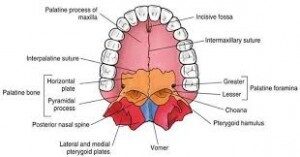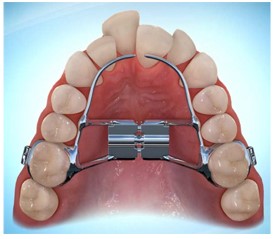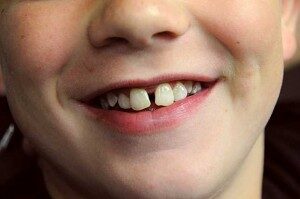May 28th, 2020
Have you ever wondered why some people are just born with great smiles and others seem to have received the short end of the stick when it comes to teeth? Is it all just related to genetics?

There is absolutely a genetic component to how teeth develop, and genetics play into the likelihood that you will develop orthodontic problems as your adult teeth erupt. However, this is only part of the story. The environment in which your teeth erupt also has a significant influence on how they develop. In fact, I have treated identical twins, who are by definition genetically identical, but when you look in their mouth, their teeth are very different.
There are a number of factors that can affect the development of your teeth and bite. One common example is thumb sucking. Thumb sucking will change the pressure that your lips, tongue, and cheeks apply to your developing teeth and jaws. It tends to have a narrowing effect on the upper jaw and creates protrusion of the front teeth. Patients who have sucked their thumb for a prolonged period of time often require an "expander" to undo the damage as well as braces. We often joke with patients that the only things that should go into their mouth are food and a toothbrush. Everything else you want to keep out.
Another example of how environment influences dental development are children who eat a lot of sugary drinks and food. It's OK to have a sweet treat from time to time, but patients who constantly "nibble" or "sip" on sugary snacks or drinks and don't brush their teeth in between tend to get decay. If a patient loses a baby tooth early due to decay, it can disrupt the correct order in which the permanent teeth grow in and cause significant bite problems. If you have a child who has lost a tooth early due to decay, you should consult with an orthodontist to prevent the development of bite problems in the future.
November 22nd, 2019
So your orthodontist said your child needs a palatal expander? Here is some helpful information to become familiar with what to expect moving forward.
How does it work?
Palatal expanders are a commonly used appliance in orthodontics to make room for crowded teeth, correct crossbites, increase the size of the airway and/or widen a narrow upper jaw. Many of us have held a newborn baby and felt the “soft spots” on their tender little heads. Those “soft spots” are cartilage sutures that have not yet closed in their developing skulls. In much the same way, each of us has a cartilage suture in our upper jaw that splits the upper jaw into two halves. At the onset of puberty, that suture starts to fuse together into one bone. However, prior to the fusion of the bone the upper jaw can be expanded significantly using a palatal expander. As the palate expands, the cartilage is stretched and stimulates bone to fill into the space created by the expander. If given enough time to stabilize, the jaw will then fill in with bone at the new “corrected” width. Pretty amazing!

Interestingly, the lower jaw does not have a suture to match the upper jaw, which limits the amount of expansion you can achieve on your bottom teeth.
What does it look like?

The expander connects to your top molar teeth with little metal rings called “bands”. Wires connected to these bands rest gently on the teeth. There is an activating mechanism in the center of the expander that can easily be turned with a “key” that is given to each patient. Your orthodontist will show you how to use the key – it is really easy! The key will slowly and gently widen the jaw with each activation about 0.25 mm. In our office, one activation is recommended each night before bedtime. Over the course of each 4 day period, the jaw widens just 1 millimeter. While this may not seem like much, within just a few weeks you will have created much more space for the teeth to fit into. You may experience some slight discomfort as the suture starts to open, but this process is relatively pain-free.
As the suture opens, you will often see a space open up between the two front teeth. This is normal and is evidence that the expander is doing its job. After your expansion is complete, the space will naturally start to close as the crowded teeth unravel. Any residual space will be closed with your braces.

How do you maintain the expander?
Keeping your teeth healthy while going through treatment with a palatal expander is pretty easy – it just takes a little extra time and effort when you are brushing and flossing your teeth. Your orthodontist will likely give you some extra little brushes to help you clean well around your expander and show some spots that are commonly missed. A Waterpik or similar device is also a helpful tool to clean around the expander. You should brush your expander the same way you would brush your teeth - until it looks clean and shiny with no white “fuzzies” (plaque) sitting on it.
Before you know it, you will have the stunning smile you have always wanted. Good luck! If you have any questions regarding expanders or orthodontic treatment, give our office a call.
May 15th, 2019
The process by which teeth move is complicated, and many books have been written on the subject. However, there are a few general principles that will help you understand what is happening or will happen in your mouth. Both braces and Invisalign apply a very small, gentle push against crooked teeth which “wakes up” the cells in your jaw bones to make the roots around your crooked teeth start to straighten out.
There are two very important cells in your body that are mostly responsible for remodeling bone – an osteoclast and an osteoblast. The osteoclast is like a pac-man cell that eats bone. The osteoblast does the opposite – it builds bone. Together they work as a team to remodel the bone around the roots of your teeth. This is how an orthodontist changes your teeth from being crooked teeth to straight teeth.

By the way, teeth don’t know what is pushing against them. The “pushing” can be done by braces, Invisalign®, chewing on a pen, sucking on your thumb, or biting your nails. Things like braces and Invisalign® tend to push the teeth in the direction we want them to go (straight) while things like thumb sucking or constantly chewing on a pen tend to make teeth more crooked.
Now that you know more about how teeth move, you can focus on doing those things that will make your teeth straight and beautiful and avoid doing the things that will make them crooked.
Tags: straight teeth, orthodontist, braces, Invisalign, biting your nails, osteoclast, osteoblast, crooked teeth
Posted in Straight teeth, Braces, Invisalign, Crowding | No Comments












 Website Powered by Sesame 24-7™
Website Powered by Sesame 24-7™